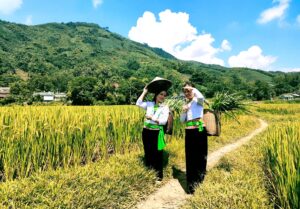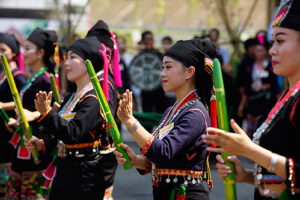The Tay People of Vietnam: A Rich Cultural Heritage in the Northern Highlands
The Tay ethnic group, one of the largest ethnic minorities in Northwest Vietnam, is renowned for its distinctive cultural identity, harmonious relationship with nature, and rich heritage. Known for their elegant yet simple indigo attire, traditional stilt houses, and vibrant customs such as the annual Long Tong festival, the Tay embody a unique blend of modesty, hospitality, and cultural pride, captivating visitors seeking authentic experiences in Vietnam’s mountainous regions.

Discovering Unique Cultural Features of the Tay Ethnic Group Few People Know
Alternative name: Tho.
Population: 1,626,392 people (according to the 2009 Population and Housing Census).
Local subgroups: Tho, Ngan, Phen, Thu Lao, and Pa Di.
Language: Belongs to the Tay – Thai linguistic group (Tai–Kadai language family).
History: The Tay people have inhabited Vietnam since very early times, possibly from the second half of the first millennium BCE.
Following the H’mong and the Red Dao ethnic groups, the Tay people constitute the third-largest ethnic population in Sa Pa. Present in Vietnam since ancient times, the Tay ethnic group is a branch of the Tai–Kadai linguistic family. In Sa Pa town, the Tay predominantly reside in southern communes such as Nam Sai, Ban Ho, and Thanh Phu, areas characterized by fertile valleys with numerous rivers and streams.
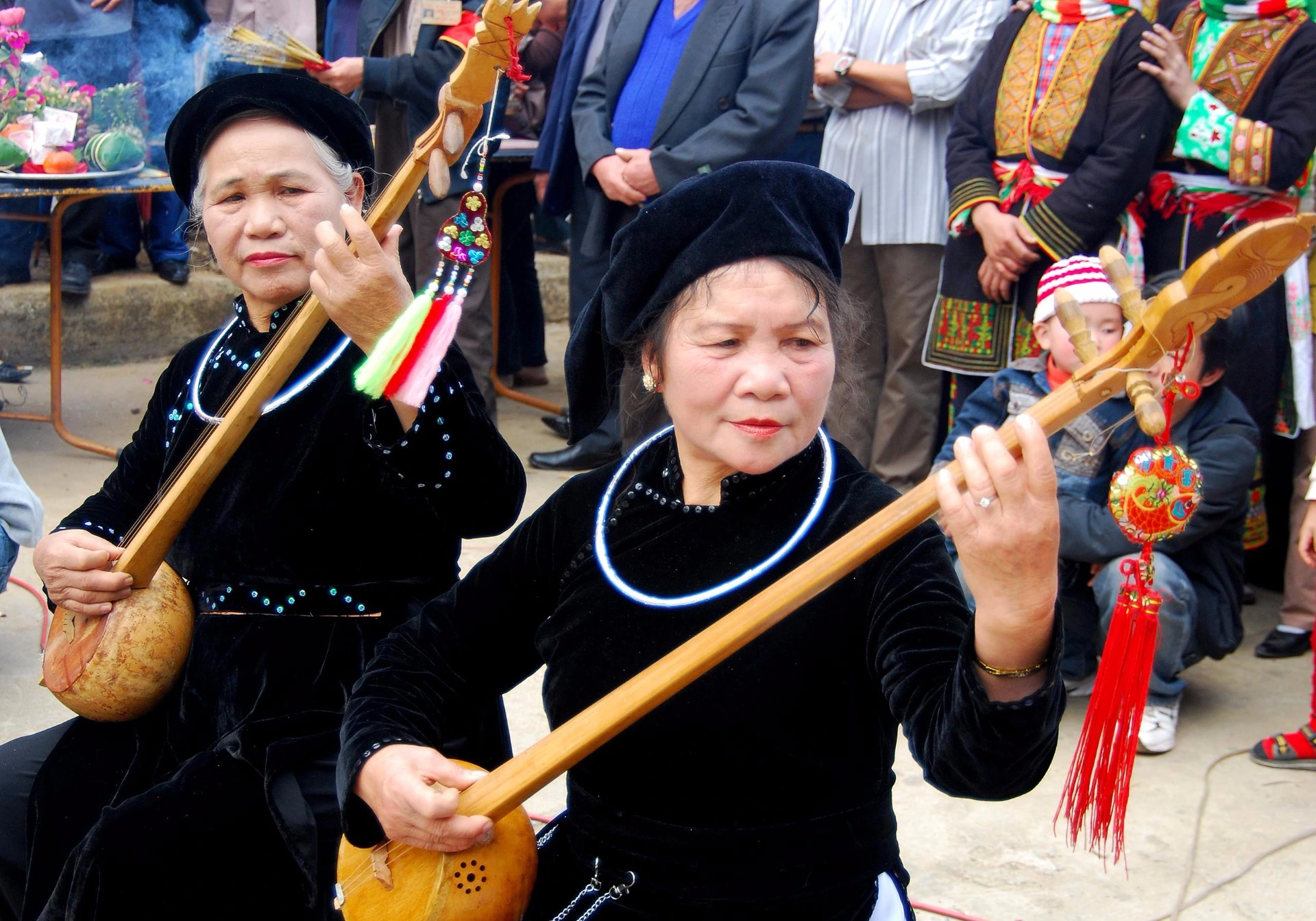
When visiting Sa Pa, tourists can easily identify Tay people by their distinctively simple attire, featuring dark indigo tones that are less colorful compared to other ethnic groups. Both men and women wear similarly styled outfits: four-panel shirts with open fronts, rounded collars, two front pockets, and a wide cloth belt around the waist, often decorated with sequins, creating distinctive highlights. On special occasions or festivals, they wear five-panel long robes with side-slits on the right side, fastened with fabric or bronze buttons.
Architectural Features and Cultural Significance
The culture of the ethnic groups in the Northwestern region of Vietnam is clearly reflected in their architecture, with each ethnic group having its own unique architectural style, creating the distinctive features of each region. The houses here are typically built using natural materials such as wood, bamboo, rattan, or reed, and are mainly stilt houses. These stilt houses not only provide warmth in the winter but also keep cool in the summer, thanks to their smart design and suitability for the highland climate. A common feature of the houses in the Northwestern region is that they are usually built on hill slopes or mountainsides, with the floor elevated from the ground, helping to avoid floods and creating a cool, airy space. The stilt house model has increasingly become an attractive destination for tourists who want to explore the life and unique culture of the people in the Northwestern region.
Traditional Tay houses are typically stilt houses, built from precious timber such as ironwood or teak, signifying durability, prosperity, and a harmonious coexistence with nature. Roofs usually have two or four sides, covered with thatch, tiles, or palm leaves, designed for effective climate adaptation in mountainous regions.
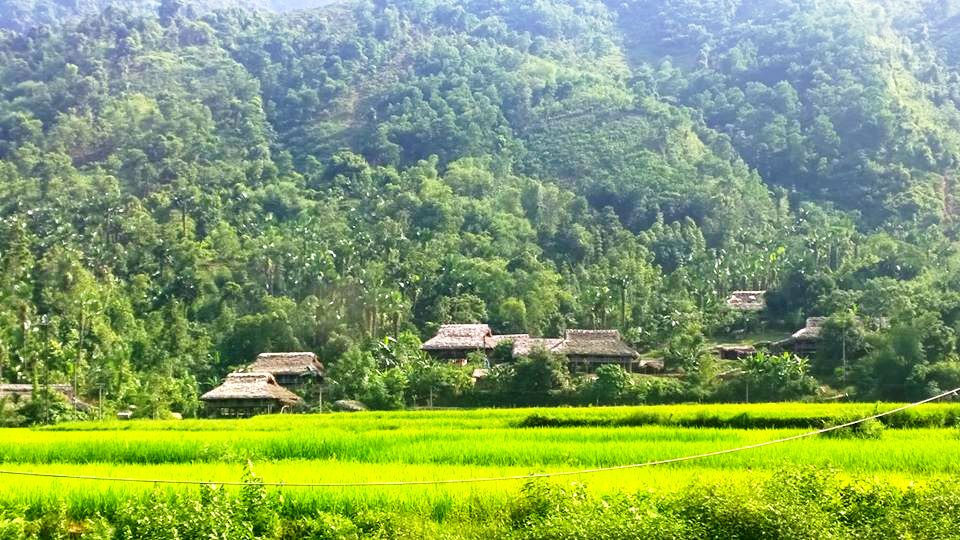
The architecture clearly represents the Tay people’s spiritual and cultural worldview, reflecting communal values, ancestral reverence, and respect for nature. The orientation of Tay houses is carefully selected according to feng shui, ensuring good fortune, health, and prosperity for the household.
Interior layouts emphasize openness and community, typically comprising spacious common rooms used for social interactions, family gatherings, and welcoming guests, highlighting the Tay people’s hospitable nature.
Tay communities usually live in clusters, forming villages with around 15 to 20 households, commonly situated along fertile valleys near rivers, streams, or lower mountainous slopes. The village layout is thoughtfully organized, emphasizing communal cooperation, shared resources, and social harmony.
Central communal spaces serve as locations for festivals, rituals, meetings, and traditional performances, reinforcing community bonds and cultural identity among Tay villagers. These spaces embody the collective spirit and communal values deeply rooted in Tay cultural traditions.
National Costumes
The traditional costumes of the ethnic groups in the Northwestern region are exquisitely designed, carrying deep meanings related to beliefs, culture, and history. Each ethnic group has its own unique style of clothing, but in general, they share common characteristics such as: the use of vibrant colors like red, yellow, green, and purple; a focus on decorative details such as embroidery and embellishments with patterns; and the design of the costumes being suited to the climate and daily habits of the people.
The traditional attire of the Tay people is known for its simplicity yet distinctive elegance. Both men and women typically wear garments dyed in dark indigo shades. Men and women wear similar-style shirts featuring four panels with an open chest design, round collars, and two front pockets. Women usually complement their outfits with wide cloth belts decorated intricately with sequins or silver ornaments.
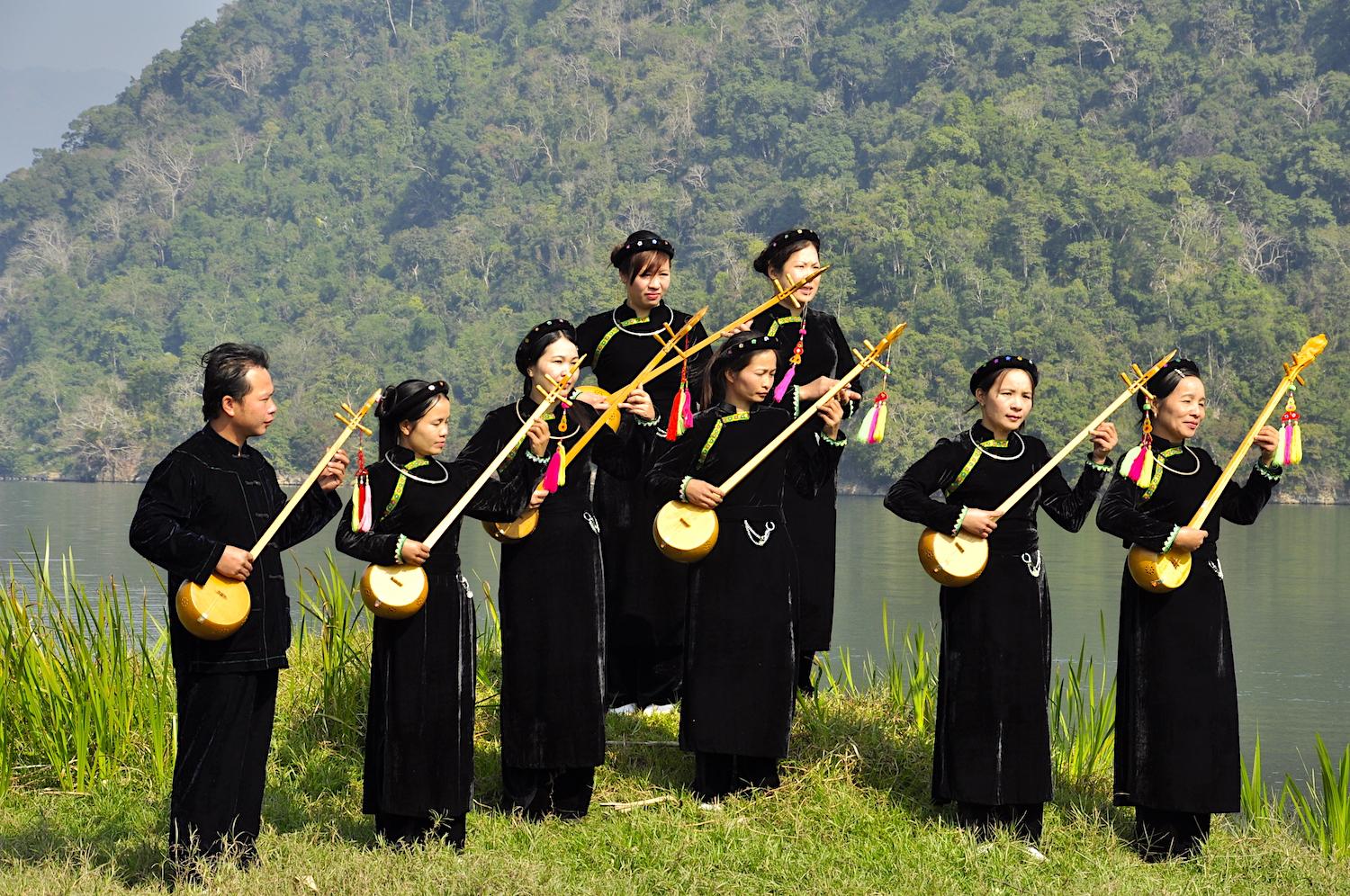
During special occasions or festivals, Tay women wear a five-panel long robe with a slit on the right side, fastened with fabric or bronze buttons, adding sophistication to their attire.
The Tay people’s clothing embodies practicality, modesty, and a close bond with nature. Indigo dye, extracted from local plants, symbolizes the harmony between the Tay people and their natural surroundings. Garments are traditionally handmade, involving meticulous weaving, dyeing, and embroidery processes, which are passed down through generations.
Embroidery patterns commonly found on their clothing represent natural motifs, such as plants, flowers, mountains, and rivers, each carrying symbolic meanings relating to fertility, prosperity, and community harmony.
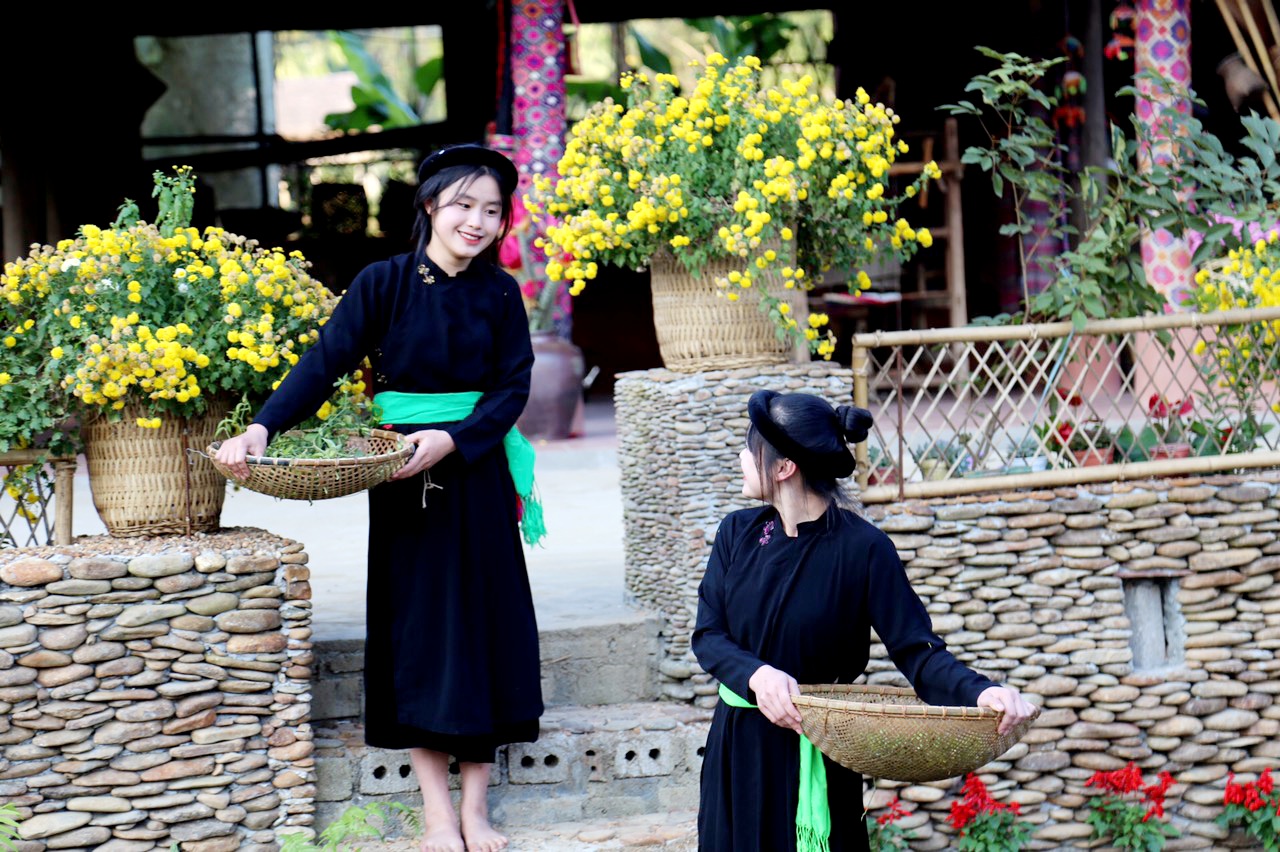
Tay women often accessorize their traditional costumes with silver jewelry, including necklaces, bracelets, earrings, and rings. Jewelry is crafted with elaborate designs representing natural elements and cultural beliefs. Styling emphasizes balance and modesty; jewelry is carefully selected to highlight the beauty of traditional attire without overpowering its natural simplicity.
Arts and Culture
The Tay people possess diverse and captivating folk songs such as hat luon and hat khap. Hat luon is often performed during festivals or to welcome visitors from afar, while hat khap resembles Quan Ho singing from Bac Ninh province. Each January, the Tay community celebrates the Long Tong Festival (Festival of Going to the Field) in Ta Van village, praying to the God of Agriculture for prosperous harvests. The festival, held annually on the eighth day of the Lunar New Year, attracts many locals and tourists who come to experience the unique cultural heritage of the northern mountainous ethnic groups.
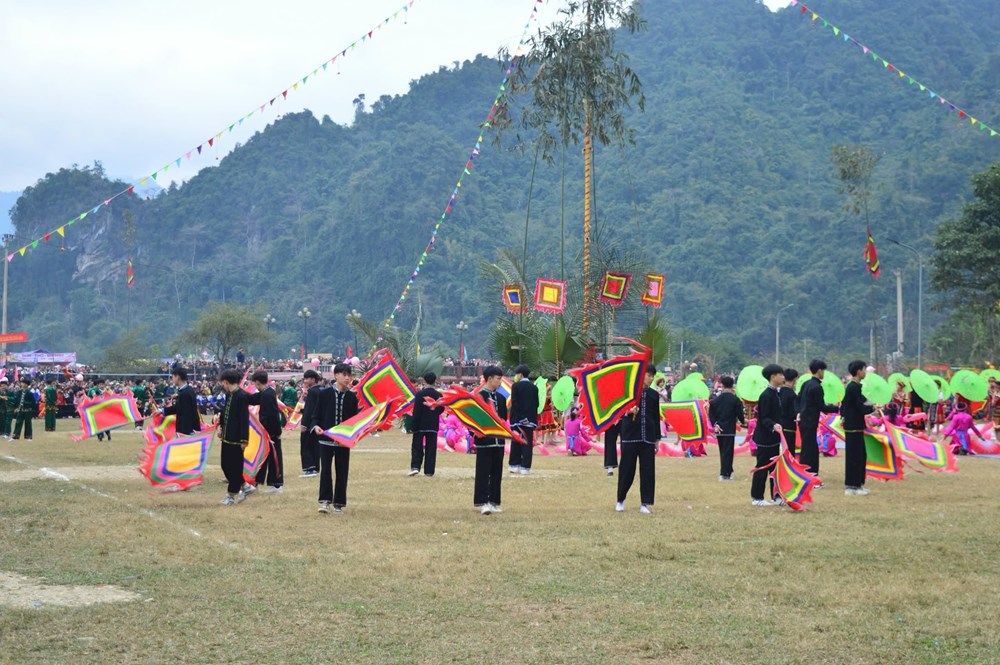
The festival ritual begins with the custom of water-fetching, carried out in a procession that starts early, before sunrise. The procession includes a shaman, drum teams, musicians, and two pairs of unmarried youths carrying a palanquin filled with water. Festivities continue with traditional dances and performances from the Tay and Dao peoples, followed by folk games such as nem con (throwing a sacred ball), tug-of-war, and climbing greased poles. This festival energizes the community for farming, construction, and cultural preservation.
Cuisine
With a long-standing tradition of wet rice farming, intensive cultivation, and sophisticated irrigation methods – such as digging and constructing canals and bamboo water wheels – have become integral parts of daily life for the Tay people.
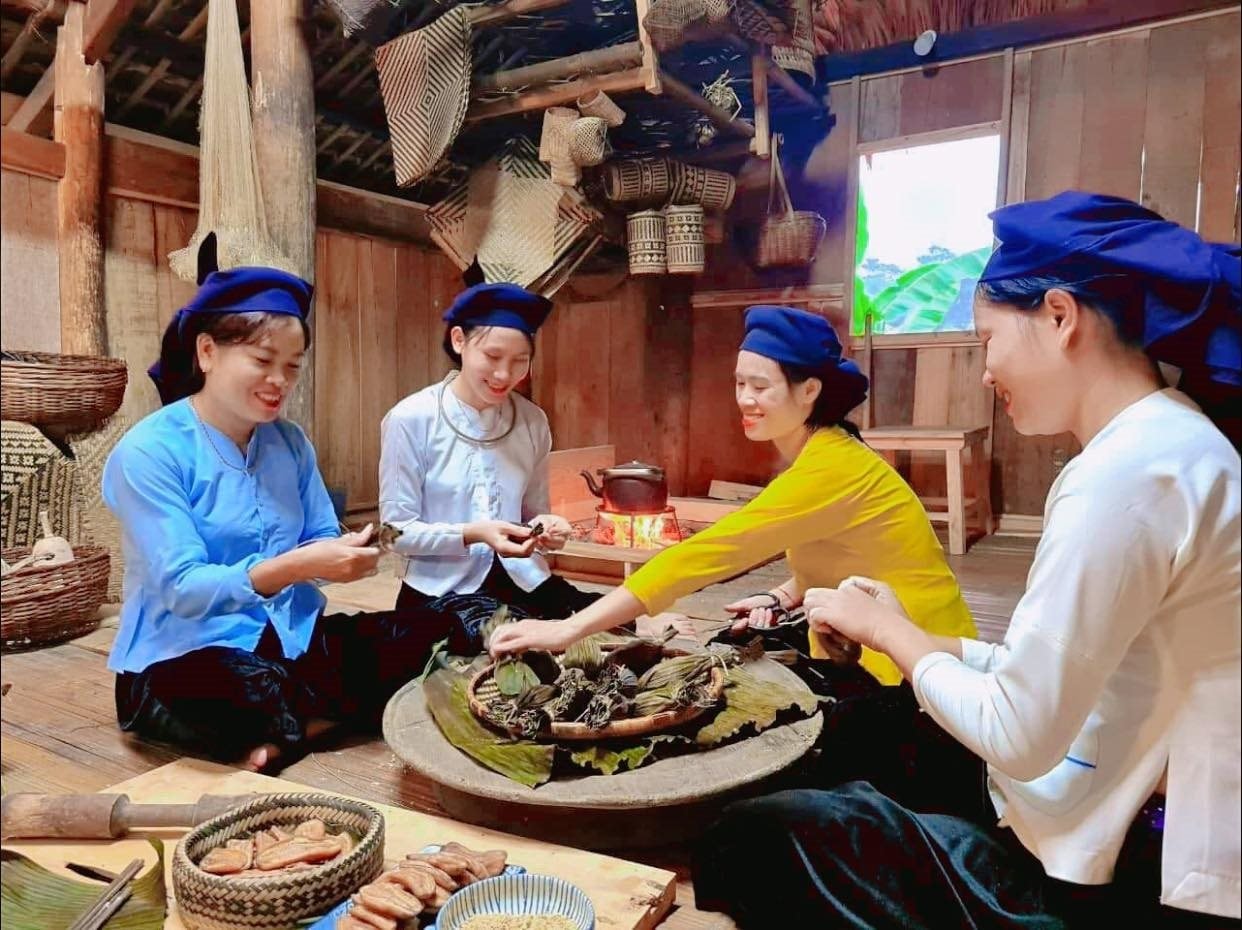
Consequently, the harvest includes rice, maize, sweet potatoes, cassava, and various fruits such as apples, pears, plums, persimmons, and mandarins. Tay culinary culture is richly diverse, featuring a range of dishes enjoyed within family meals.
The Tay particularly favor sour dishes such as stir-fried buffalo meat with fermented bamboo shoots, fermented pork, sour-marinated field fish, sour fish soup with tart leaves, and various acidic fruits like star fruit, dracontomelon (sau), and canarium (tram), all extensively used in their cuisine.

